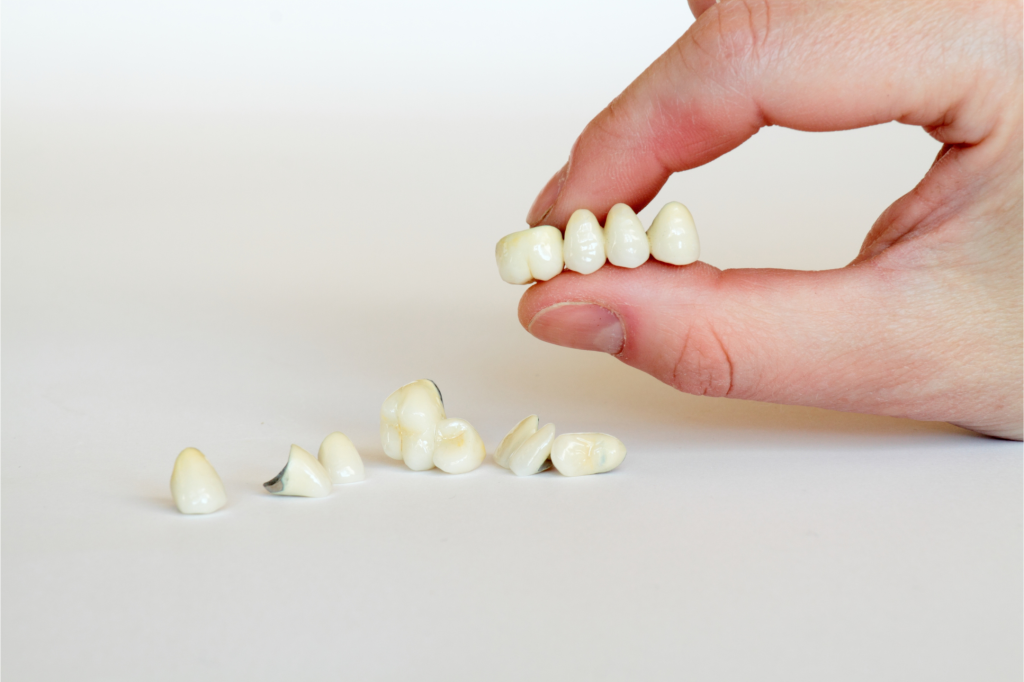What are dental bridges?

If you have one or more missing teeth, a dental bridge can fill the gap with one or more artificial (false) teeth. A bridge is typically made of crowns on either side of the missing tooth or teeth supporting the pontic (false tooth) and is cemented in place.
Why do I need a dental bridge?
Your teeth work together. If a tooth is missing, nearby teeth can move into the empty space. The teeth in your opposite jaw can also move up or down toward the space. This can cause:
- Bite problems.
- Chewing difficulties.
- Pain from the extra stress on your teeth and jaw.
- Self-consciousness about the way you look or your smile.
What happens during a procedure for a traditional dental bridge?
You’ll typically need at least two appointments:
Abutment teeth preparation: During your first visit, your healthcare provider reshapes the abutment teeth. They’ll remove part of the enamel and dentin, so there’s room for the crown.
Impressions: Your provider takes impressions or a digital scan of your teeth. A dental laboratory uses the mold or scan as a model to create your bridge, false teeth and crowns. You’ll have a temporary bridge to protect the exposed areas in your mouth while the lab makes your bridge.
Permanent bridge placement: During your second visit, your provider removes the temporary bridge and places the permanent bridge. Your provider will carefully check the bridge and make any needed adjustments to make sure it fits you comfortably.
What are the advantages of this procedure?
A dental bridge can:
- Help your bite.
- Prevent remaining teeth from moving out of place.
- Restore your ability to chew and speak.
- Restore your smile.
 (732) 863-8040
(732) 863-8040
